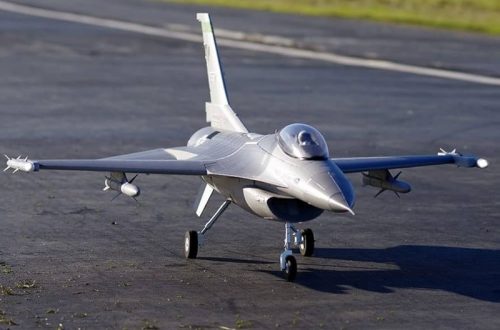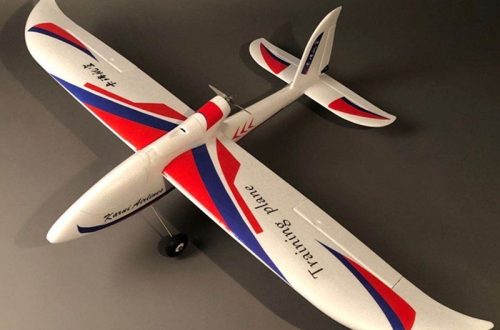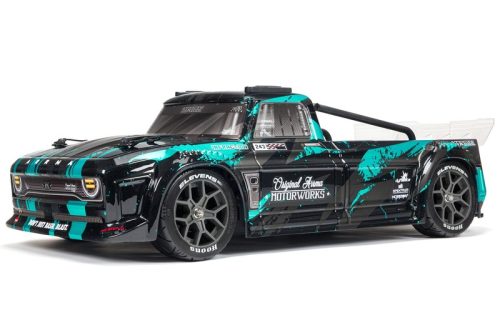Part 1: Understanding Quadcopter Technology
Quadcopters, those nimble aerial vehicles that have captured the imagination of enthusiasts and professionals alike, are a type of multirotor aircraft. They operate using four rotors, each powered by an electric motor. Understanding the fundamental principles of flight and maneuverability is crucial for operating these devices safely and efficiently.
Key Components of a Quadcopter
A quadcopter is a complex system composed of several interconnected components:
Motors: These are the workhorses of the quadcopter, converting electrical energy into mechanical energy to spin the propellers. The power and efficiency of the motors significantly impact the quadcopter’s flight performance.
Propellers: These are the aerodynamic blades that generate lift and thrust. The pitch, diameter, and number of blades influence the quadcopter’s flight characteristics.
Electronic Speed Controllers (ESCs): ESCs regulate the speed of the motors, enabling precise control over the quadcopter’s movement.
Flight Controller: This is the brain of the quadcopter, processing sensor data and issuing commands to the motors to maintain stability and execute maneuvers.
Battery: The battery provides the power to operate the motors and electronic components. The battery’s capacity and discharge rate directly affect the flight time and performance of the quadcopter.

How Quadcopters Fly
To understand how quadcopters fly, it’s essential to grasp the concept of counter-rotating propellers. Two propellers rotate clockwise, while the other two rotate counterclockwise. This configuration generates opposing torques, canceling each other out and preventing the quadcopter from spinning uncontrollably.
By controlling the speed of each motor individually, the pilot can manipulate the pitch, roll, yaw, and thrust of the quadcopter. By increasing or decreasing the speed of specific motors, the pilot can make the quadcopter ascend, descend, move forward, backward, sideways, or rotate. In addition to the basic flight controls, advanced quadcopters often incorporate sophisticated features like GPS, altitude hold, and autonomous flight modes. These technologies enable precise flight maneuvers and allow for complex aerial operations.
By understanding the fundamental principles of flight and the components that make up a quadcopter, enthusiasts and professionals can gain a deeper appreciation for these remarkable machines. Whether you’re a hobbyist or a drone pilot, mastering the art of quadcopter flight requires a solid foundation in both theory and practice.
Part 2: Types of Quadcopters and Their Applications
Quadcopters, once a niche hobbyist pursuit, have evolved into versatile tools with applications spanning from recreational use to professional industries. Let’s delve into the key distinctions between consumer and commercial quadcopters.
Consumer Quadcopters

Designed primarily for recreational use, consumer quadcopters are tailored to provide a user-friendly and enjoyable flight experience. They are equipped with a range of features that cater to hobbyists and enthusiasts:
User-Friendly Controls: Consumer quadcopters often come with intuitive controllers that are easy to learn and operate. Many models offer flight modes that simplify complex maneuvers, making them accessible to beginners.
High-Quality Cameras: Equipped with advanced camera systems, consumer quadcopters allow users to capture stunning aerial photos and videos. These cameras offer features like 4K resolution, image stabilization, and various shooting modes.
Flight Stability: Consumer quadcopters are designed to provide stable flight, even in windy conditions. Advanced flight control systems and sensors help maintain stability and prevent crashes.
Long Flight Times: With longer battery life, consumer quadcopters offer extended flight times, allowing users to explore more and capture more content.
Commercial Quadcopters
Commercial quadcopters are specialized drones designed to perform specific tasks in various industries. They are equipped with advanced sensors, software, and payload capabilities to meet the demands of professional applications:
Precision Agriculture: Agricultural drones equipped with high-resolution cameras and sensors can monitor crop health, detect pests and diseases, and optimize irrigation and fertilization practices.
Construction and Surveying: Commercial drones are used to survey construction sites, monitor progress, and create detailed maps and 3D models. They can also be used to inspect infrastructure, such as bridges and power lines.
Search and Rescue: In emergency situations, commercial drones can be deployed to search for missing persons, assess disaster damage, and deliver critical supplies.

Delivery Services: Drone delivery services are emerging as a promising solution for efficient and rapid delivery of goods. Commercial drones are transporting packages and medical supplies to remote areas. While consumer and commercial quadcopters share some similarities, their specific features and capabilities are tailored to their intended use. As technology continues to advance, we can expect to see even more innovative and sophisticated drones emerging in the future, pushing the boundaries of what is possible.
Part 3: Advanced Features and Technology in Quadcopters
Quadcopters have evolved significantly, incorporating advanced technologies that enhance their capabilities and safety. Two key features that have revolutionized the way we use drones are GPS and collision avoidance systems.
GPS, or Global Positioning System, is a vital technology that enables accurate positioning and navigation. Many modern quadcopters are equipped with GPS modules that allow them to determine their precise location and altitude. This information is used to:
Position Holding: GPS allows quadcopters to maintain a fixed position, even in windy conditions. This is particularly useful for aerial photography and videography, as it ensures stable and steady shots.
Automated Flight Routes: By programming specific waypoints, pilots can create automated flight paths. The quadcopter will then autonomously navigate these waypoints, freeing up the pilot’s attention and allowing for more complex flight maneuvers.
Return-to-Home (RTH) Function: This feature enables the quadcopter to automatically return to its takeoff point at the press of a button or in the event of a signal loss. RTH is a crucial safety feature that helps prevent the loss of a quadcopter.

Collision Avoidance Technology
As quadcopters become more sophisticated, the need for advanced safety features has increased. Collision avoidance technology is designed to detect obstacles in the flight path and take evasive action to prevent accidents. This technology typically relies on a combination of sensors, such as:
Ultrasonic Sensors: These sensors measure the distance to nearby objects using sound waves. They are effective for detecting obstacles at short distances.
Optical Flow Sensors: These sensors track the movement of the ground beneath the quadcopter to estimate its relative motion. They are useful for maintaining stability during indoor flight and low-altitude maneuvers.
LiDAR Sensors: LiDAR (Light Detection and Ranging) sensors emit laser beams to measure the distance to objects. They provide accurate and detailed 3D maps of the environment, enabling the quadcopter to avoid obstacles effectively.
By incorporating advanced collision avoidance systems, quadcopters can operate more safely and autonomously, reducing the risk of accidents and damage. As technology continues to evolve, we can expect to see even more sophisticated collision avoidance systems that will further enhance the safety and reliability of drones.
Part 4: Regulations and Safety Considerations for Quadcopter Use
Regulatory Compliance
As the popularity of quadcopters continues to soar, it’s crucial for pilots to understand and adhere to local aviation regulations. These regulations vary from country to country and even within different regions, so it’s essential to stay informed about the specific rules that apply to your area.
Here are some common regulations that quadcopter pilots should be aware of:
Registration: Many countries require quadcopter owners to register their drones with a local aviation authority.
Airspace Restrictions: Certain areas, such as airports, military bases, and crowded public spaces, are designated as no-fly zones. Pilots must avoid flying in these restricted areas to prevent accidents and disruptions.
Privacy Laws: Drone operators must respect privacy laws and avoid flying over private property or capturing images of individuals without their consent.
Flying Guidelines: Many countries have specific guidelines for flying drones, including restrictions on flight altitude, distance, and nighttime operations.
Safety Guidelines
Safety should be the top priority for any quadcopter pilot. Adhering to the following safety guidelines can help minimize risks and ensure a safe flying experience:
Pre-Flight Checks: Before each flight, conduct a thorough pre-flight inspection, checking the battery, propellers, motors, and other components for any damage or issues.
Line of Sight: Always maintain a clear line of sight with your quadcopter. Avoid flying in conditions with poor visibility, such as fog, rain, or darkness.
Weather Conditions: Avoid flying in adverse weather conditions, such as strong winds, heavy rain, or thunderstorms.
No-Fly Zones: Respect no-fly zones and avoid flying near airports, emergency services, or crowded areas.
Battery Safety: Use high-quality batteries and chargers, and avoid overcharging or over-discharging batteries.
Propeller Safety: Handle propellers with care, as they can cause serious injury.
Responsible Flying: Fly responsibly and avoid reckless behavior that could endanger others.
By following these guidelines and staying informed about local regulations, quadcopter pilots can enjoy a safe and rewarding flying experience. Remember, responsible drone operation is essential to maintaining a positive image for the drone community and ensuring the continued growth of this exciting technology.

Part 5: Maintenance and Troubleshooting Tips for Quadcopters
Routine Maintenance:
Regular maintenance tasks, such as propeller inspection, motor and battery checks, and software/firmware updates, are crucial for ensuring the optimal performance and longevity of quadcopters.
Troubleshooting Common Issues:
Understanding common quadcopter issues like flight instability, motor or battery problems, and firmware glitches can help pilots effectively troubleshoot and resolve technical issues.
Part 6: The Future of Quadcopter Technology
Advancements in Autonomy:
Ongoing developments in artificial intelligence and machine learning are paving the way for autonomous quadcopter operations, enabling advanced functionalities such as automated inspections and autonomous flight missions.
Integration of New Technologies:
The integration of technologies like 5G connectivity is expected to enhance quadcopter capabilities. Advanced sensors and improved battery and propulsion systems will also contribute to this progress. These advancements are expected to expand the future applications of quadcopters.




